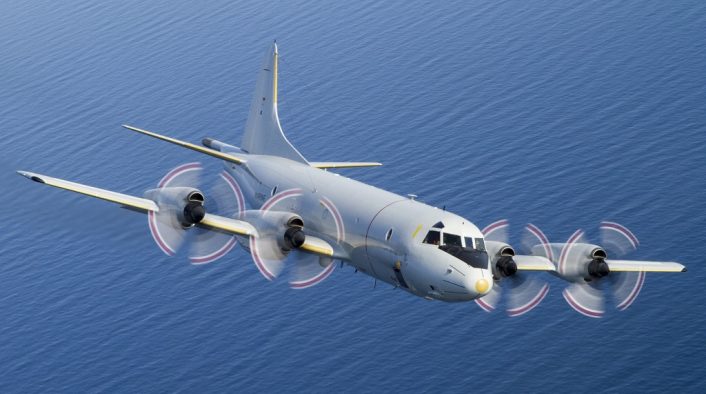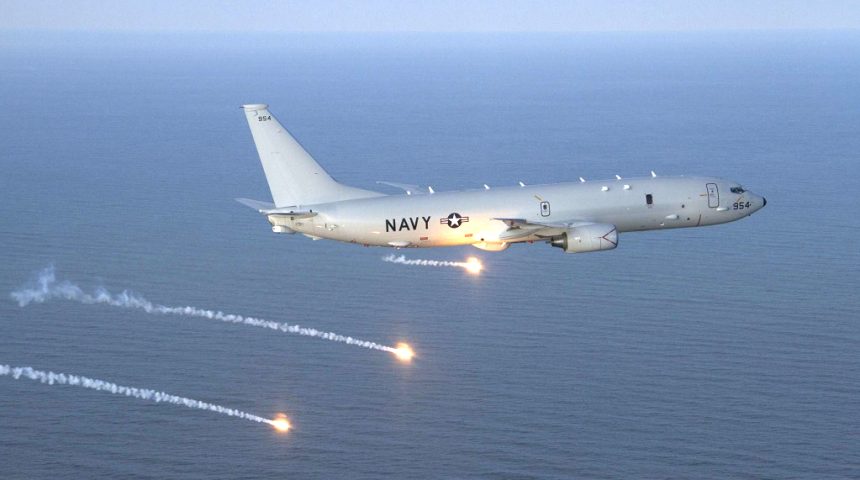The selection of the P-8 Poseidon emerged during a parliamentary interrogation after the United States approved a possible Foreign Military Sale of five aircraft to Germany.
The Bundesministerium der Verteidigung (BMVg), the German Federal Ministry of Defence, is looking to the Boeing P-8A Poseidon as the temporary replacement for its ageing fleet of Lockheed P-3C Orion maritime patrol aircraft, according to Parliamentary State Secretary Thomas Silberhorn.
Silberhorn, as quoted by the German newspaper Behoerden Spiegel, answered to questions from Bundestag members, on behalf of the Federal Minister of Defence, about the proposals from Boeing and France.
Answering about Boeing’s proposal, which would make Germany the third operator of the P-8A in the European continent, the Poseidon was described as an equal replacement for the Orion:
“The capabilities of Boeing’s P-8A Poseidon weapon system basically correspond to those of the P-3C Orion. Only the P-8A Poseidon weapon system could ensure a seamless and timely capability transition if a Foreign Military Sales contract were concluded before the summer break in 2021. The possibility of operation for an interim period in the overall system of the Bundeswehr using the existing infrastructure of the base in Nordholz would be given.”
The U.S. Department of State has already approved a possible Foreign Military Sale of five P-8 Poseidons to Germany in March 2021, for an estimated total cost of 1.77 billion USD. According to the U.S. Defense Security Cooperation Agency, the German Government requested, together with the five P-8As, the Multifunctional Distribution System Joint Tactical Radio Systems 5 (MIDS JTRS 5), Northrop Grumman’s LN-251 Inertial Navigation System/Global Positioning System (INS/GPS), Wescam MX-20 EO/IR (Electro-Optical/InfraRed) imaging systems, AN/ AAQ-2(V) I Acoustic System, AN/APY-10 radar, ALQ-240 Electronic Support Measures, AN/ALQ-213 Electronic Counter Measures and NexGen Missile Warning Sensors.
The 1.77B USD estimated price is however provisional, as Germany has not yet officially selected the P-8 and signed the contract with Boeing. Also, the acquisition program has not yet been approved by the Bundestag. The DSCA notification highlighted that this sale would allow an easy transition from the P-3C Orion to the P-8A, allowing the sustainment of the German Maritime Surveillance Aircraft (MSA) capability for the next 30 years, which contrasts the German claim that this will be only a temporary replacement until the new Maritime Airborne Warfare System (MAWS) is ready to be introduced in service.
The other proposal was submitted by France, with an offer for four Atlantique 2 (ATL2) aircraft, the modernized variant of the Breguet Br.1150 Atlantic. Answering about this proposal, Silberhorn said to the Bundestag:
“The number and the expected readiness of the aircraft on offer will foreseeably not be able to cover the requirements of potential future operational commitments as well as the needs for crew regeneration and for conducting training and reconnaissance flights.”

Last month, Naval News was able to obtain confirmation about this proposal from a French Armed Forces spokesperson, who offered some more details:
“To allow Germany to continue to have a maritime patrol aviation capability between the withdrawal from service of its current P-3C Orion aircraft and the arrival of the new maritime patrol aircraft that will be developed under the MAWS (Maritime Airborne Warfare System) program, France is proposing four refurbished Atlantique 2 (ATL2) aircraft. Depending on Germany’s needs, the four aircraft can be sold once the renovation to std6 has been taken over by the Germans. The four planes will be at the latest aircraft standard (standard 6), which successfully passed the initial operational capability milestone of the French Navy in 2020. They will have a range of high-tech equipment enabling them to carry out efficient maritime patrol missions. The proposal includes training for the implementation of the devices and their maintenance. As the French offer is based on operational cooperation, ongoing discussions are taking place both between the respective naval headquarters and between the defense ministries.”
As a side note, the German Navy has already operated the Atlantic in the past between 1963 and 2005, with 20 aircraft delivered and some converted to perform SIGINT (Signals Intelligence) missions. The ATL2 was considered as a replacement, but ultimately the choice went to ex-Dutch P-3 Orions. Eight Orions are still in service, however half of them are inoperable “due to damage that cannot be repaired economically”. Out of those four aircraft, according to the government, only two aircraft will probably still be usable from 2023. According to Cirium fleets data mentioned by FlightGlobal, the German Orions have an average age 37.8 years.
Initially, the P-3C was supposed to be retired in 2035, when MAWS is expected to be ready for service. The German Federal Ministry of Defence, however, ended in June 2020 the modernization plan of the Orion because of “costs and technical difficulties”, beginning a market survey to avoid an unacceptable and taking into account all interactions with the Franco-German MAWS program.
The MAWS cooperation was announced during the 2018 ILA airshow in Berlin, when the two countries signed a letter of intent to jointly develop the next generation maritime patrol aircraft. The candidate aircraft, which was unveiled at Euronaval 2018, is the Airbus A320M3A (Modular Multi-Mission Aircraft) in its MPA variant, developed from the commercial A320, and specifically the relatively new A320neo (new engine option) variant.
The A320M3A, according to Airbus, is designed to fulfill a range of ISR (Intelligence, Surveillance and Reconnaissance) roles, particularly maritime patrol and anti-submarine warfare, with the possibility to be outfitted with modular roll-on/roll-off payloads for airlift missions. The advantages mentioned by the producer are the low operational and life-cycle costs, the high reliability and the worldwide supply chain proven by the baseline aircraft in commercial service. The concept is similar to what Boeing is doing with the 737NG (Next Generation), which evolved notably in the P-8A Poseidon and the E-7A Wedgetail.
Among the modifications, the aircraft is expected to incorporate a new glass cockpit and digital fly-by-wire flight control system to provide safe and efficient flight performance, large bubble observation windows on both sides of the fuselage for visual observation and internal weapon bay. The ASW variant of the aircraft will be armed with up to eight torpedoes and an unspecified number of sonobuoys to detect, localise, identify, track and eventually engage hostile underwater targets.
Additionally, the A320M3A will receive a self-protection system and EO/IR sensors beneath the nose, a Synthetic Aperture Radar (SAR) under the fuselage and a magnetic anomaly detector mounted behind the tail, as well as secure communication systems. Other mission-specific roll-on/roll-off payloads carried by the aircraft include a C4ISR (Command, Control, Communications, Computers, Intelligence, Surveillance and Reconnaissance) suite, a SIGINT system, Electronic Support Measures (ESM), an acoustic system and a surface search radar.
The selection of the P-8A Poseidon is not an isolated “surprise” acquisition program in Germany. Last year, the German Air Force decided to replace part of its Tornado fleet with about 30 F/A-18E/F Super Hornets and 15 E/A-18G Growlers to replace the nuclear capability of the Tornado IDS and the Electronic Warfare (EW) capability of the Tornado ECR, respectively. The choice was due to the faster integration of the B-61 nuclear bomb on the American-made aircraft, which forced a change in the initial plan to replace the entire Tornado fleet with the Eurofighter Typhoon.









